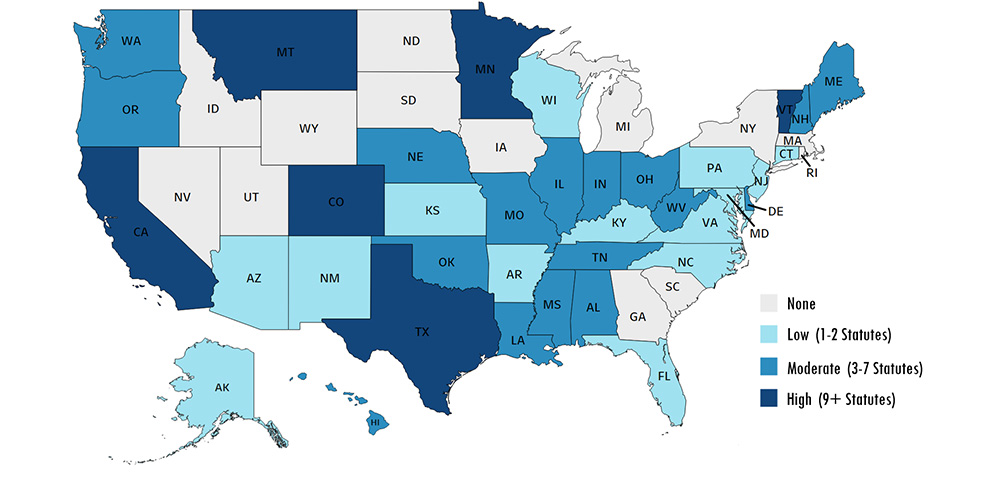Evaluating Levels of Support
Statutory Support for Restorative Justice in the United States
*Source: Shannon Sliva, University of Denver, 2019
The directory catalogues U.S. state statutes that specifically support the use of restorative justice by name. This is important to note, as some state codes support restorative aims without naming restorative justice or any specific restorative justice practices, like victim-offender dialogue or community conferencing. The directory primarily catalogues state codes, but sometimes includes strong administrative regulations. Further, the directory categorizes statutes by application, population, practice type, and level of support. Related to the latter, statutes are coded as either ideological, structured permissive, or a structured requirement. These codes are applied based on the legal strength of each statute: Ideological statutes define restorative justice, generally encourage its use in an unstructured manner, or list restorative justice as one of many options in a given context. Structured permissive statutes provide additional structure – such as clarity about the context, funding structures, or administration of the policy – but do not require the use of restorative justice in a given context. Structured requirements are statutes which legally mandate the application of restorative justice in a given context, such as requiring the establishment of a program or requiring victim notification.
We view the directory as a collaborative compendium, and we welcome information about new, revised, or repealed statutes from practitioners, policy experts, and research partners. In addition, we’d like to feature work that illuminates the field of restorative justice policymaking. Please send any corrections or submissions to shannon.sliva@du.edu.



